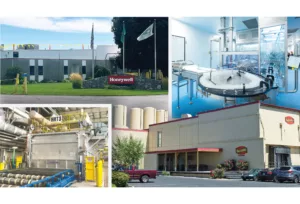Meeting a growing need for care
Project Access now has 850 providers, is seeking funds to sustain patient growth
Project Access, a program here in which health-care providers offer free medical care to low-income, uninsured residents, is stepping up efforts to secure more funding as it works to help a growing uninsured population. It has been growing strongly since it began offering service in late 2003.
It has served 2,500 people so far, with patient volumes rising between 10 percent and 15 percent a year, says executive director John Driscoll. Last year, health-care providers here donated $3.3 million worth of care, and a total of more than $8.8 million in care has been provided since the program started. For every dollar in funding Project Access received last year, when it took in $458,000, the program provided roughly $8 worth of health-care services, he says.
We have a real positive momentum, and we want to keep it going, Driscoll says.
Uninsured patients who visit community clinics, physicians offices, or hospitals can be referred to the program. The Spokane County Medical Society, which oversees the program, screens patients to make sure theyre county residents, which is a requirement, and also asks for patients net income figures to make sure they dont qualify for Medicaid. If Medicaid will cover care, Project Access steers patients in that direction so its own resources go farther. Patients must sign a responsibility agreement that they will keep appointments and follow their medical plans.
In most cases, once patients are enrolled theyre referred to specialists. Project Access helps coordinate those appointments and provides transportation to them if needed. It also helps coordinate the filling of prescriptions, and the scheduling of X-rays, surgeries, or other specialty care that has been recommended.
Some 850 providers, including doctors, physical therapists, and others, and all six hospitals in Spokane County now are part of the programs network, Driscoll says. Thats up from roughly 700 providers last year, according to an annual report on the program issued by the Spokane County Medical Society in December.
Last month, Group Health joined the Project Access network. It added to the number of primary-care physicians in that network by donating 40 primary-care patient slots to the program, he says.
To sustain its growth, Project Access needs to acquire additional funding, Driscoll says. A $425,000 start-up grant donated by the Robert Wood Johnson Foundation that helped fund the program during its first three years expired last year, so now its looking for other sources to supplement other grants its been able to secure, he says. The program has five employees, and last year, its operating costs totaled $450,000, excluding drug expenses.
We have to make sure we have consistent, sustainable funding to keep doing what were doing and grow our program, Driscoll says.
Grant programs currently make up a third of the programs funding, while a third comes from health-care organizations and another third from local businesses and foundations. In addition, the county government and eight city governments donate money for drug prescriptions, which cost between $150,000 and $200,000 a year. Patients pay a $4 copay for each prescription. That money is used to offset the cost of medications.
This year, Project Access plans to seek more donations from businesses here. It also is taking part in a group lobbying effort that includes the proposed Institute for Systems Medicine, which seeks to enhance a systems-based, or genome-based, approach to medicine here. That group is asking the Washington Legislature to divert some sales-tax money to that project, as well as to other health-care safety-net programs such as one run here by the Community Health Association of Spokane, he says.
Were pretty optimistic that we have a package that addresses economic and health-care needs in the community, he says. The medical schools presence would give us medical providers, and ISM is the future of medicinehow medical care will be delivered in the future.
The uninsured
An estimated 48,000 Spokane County residents were uninsured last year, Driscoll says. Thats up from about 33,000 people identified in the 2000 U.S. Census as being uninsured. The need is out there, and its huge, he says.
The demographic that Project Access serves also is the fastest-growing segment of the uninsured population here, he says. That group, which includes people who earn between 100 percent and 200 percent of the federal poverty rateup to $20,000 a year for one person and up to $40,000 for a family of fourjumped significantly last year, he says. Project Access doesnt offer care to patients who qualify for Medicaid, whose earnings fall at or below the poverty level.
Meanwhile, the federal Deficit Reduction Act of 2005 decreased Medicare and Medicaid reimbursements significantly, increasing cost pressures on physicians who already are spread too thin, Driscoll asserts. Project Access depends on distributing its growing patient load evenly among its network of physicians, each of whom commits to accepting one new patient a month and to not charge those patients for treatment. On average, patients see about five different providers during the course of their treatment. Hospitals donate services such as surgical suites, diagnostic tests, and medications.
Were always seeking more doctors, and we need to keep recruiting doctors in Spokane, he says. If we had twice as many doctors we could serve twice as many patients, because theres a never-ending need.
Economic impact
During the last three years, Project Access organizers focused their efforts on getting the program launched and running, he says. Now that operations are running smoothly and sufficient amounts of data have been collected about patients, Driscoll hopes to secure funding to conduct research on the impact the program is having on the health-care system and economy here. Such research would include statistics on workplace productivity, absenteeism, and the monthly per capita cost of charity medical care in Spokane County, he says. To do that, Project Access hopes to work with hospitals here that could help provide data on such things as emergency-room utilization trends.
The programs annual report noted that outpatient surgical procedures for Project Access patients increased significantly last year compared with the previous year, while inpatient procedures declined in favor of more cost-efficient forms of care.
Anecdotal evidence indicates that the programs results have been consistent with its goals of treating conditions early enough to prevent hospital emergency-room use or recurring visits to primary-care doctors, Driscoll asserts.
The programs strong results caught the attention of former U.S. Senate Majority Leader Bill Frist, who visited Spokane last summer to learn more about Project Access. Frist received his medical training in Boston in the 1980s with several doctors who now practice here and participate in the program.
In a newsletter to his constituents, Frist said of Project Access, Yesterday, I visited an impressive communitywide initiative that shows what can be done when everyone pulls together.
Frist wrote that he was particularly interested in the information-technology aspect of Project Access. Through the programs online computer system, providers can access patient information and track a patients progress to see that their contributions have made a difference, Driscoll says.
If patients miss more than two doctors appointments, theyre removed from the program, Driscoll says. Although some patients have been removed, those instances are very rare, he says.
Its a small percentage, and 99 percent of our patients are so grateful and just happy to get some help, he says.
In addition to providing free healthcare, a key part of Project Access involves helping enroll patients in Washington states Basic Health Plan, he says. The Basic Health Plan is a state-sponsored program that provides affordable health-care coverage through private health plans to people who dont qualify for Medicaid. Under the Basic Health Plan, people pay a monthly premium on a sliding scale based on income. Those at 300 percent of the federal poverty rate pay the full premium for coverage. About half of Project Access participants enrolled in the Basic Health Plan, and the other half say they cant afford to pay the premium, Driscoll says.
Contact Emily Brandler at (509) 344-1265 or via e-mail at [email protected].
Related Articles

_c.webp?t=1763626051)

_web.webp?t=1764835652)
